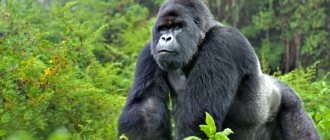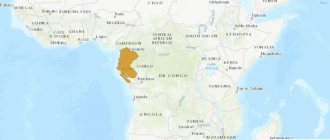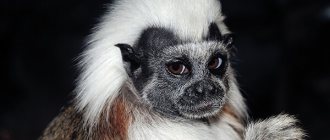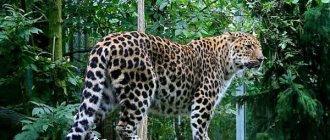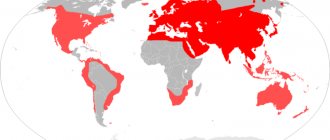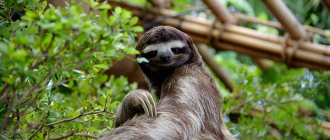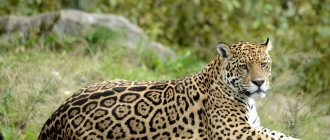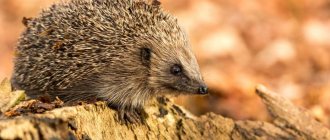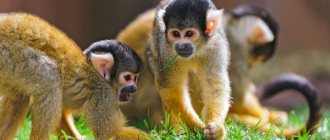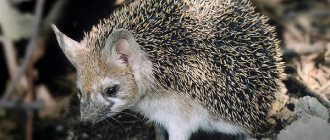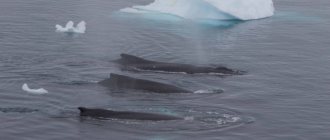The Japanese snow macaque is an incredibly cute and funny animal. This mammal lives in a rather harsh climate. The Japanese macaque would have died out long ago if it were not for the caring attention of zoologists who constantly monitor the state of the population. Currently, this species of primates is listed in the Red Book and is under threat of complete extinction.
Habitats
Among the Japanese islands, there is one that was chosen by the hero of our review - the Japanese macaque. This is the northernmost species of primates, and the island of Yakushima, with a rather harsh climate, is their homeland.
In 1972, a dozen different-sex individuals were transported to the United States, to Texas, but in the 80s, several individuals fled into the forests outside the farm where they lived. As a result, the Japanese macaque added the United States to its natural habitats. You can also see these animals in zoos, in particular in Moscow. In fact, these are heat-loving animals. They could well take root in the southern countries of Europe. However, their love of raiding empty houses, destroying gardens and vegetable gardens, and also damaging flower beds in parks forces them to keep a small number of individuals only in closed enclosures in zoos.
Communication and skills transfer
Japanese macaques are one of the most intelligent species among other monkeys. They learn easily and are able to pass on the acquired skills to their offspring and brothers. Over the years, primatologists observed how the monkey who always washed potatoes before eating them taught the rest of his family to do the same. Years after her death, the group continued to wash food.
Macaques use various sounds to communicate. Scientists have noticed that the type of sound depends on the area where they usually live, and resembles, for example, the different dialects of the people living there. It is believed that the groups create their own jargon, which may differ from groups of monkeys living in other areas.
Appearance
The Japanese macaque looks quite large and impressive. It's all about the thick, long and fluffy coat. The animal looks especially beautiful in the cold season, when it is overgrown with winter fur. It is gray-steel, with a bronze tint.
Nature did not endow this species of monkey with a long tail. They can only boast a very short, hare-like, charming round ball.
The height of the largest male does not reach 100 cm, and the weight does not exceed 15 kg. Females are much smaller. They are easy to distinguish by the way they behave. Males are more daring, while females try to remain more modest. They often have a baby hanging from their arms or back.
Monkeys' faces and other parts of the body that are not covered with fur become weathered and red in winter from water and cold air.
Reproduction and life cycle
The red color of the muzzle is a sign that the animal has reached adulthood. Female Japanese macaques typically reach sexual maturity between four and five years of age, about a year earlier than males. They typically choose a mating partner based on social status and, after a gestation period that lasts up to 6 months, give birth to a single young. Japanese macaques are wonderful educators, they love babies very much and, from the moment of birth, the group helps mothers care for their offspring. Baby Japanese macaques cling to their mother for the first two years and have a very close bond between them.
The Japanese value their population as a national treasure
The flock is a family of several dozen macaques of different sexes and ages. The Japanese spend large sums from the country's budget to maintain the population. A decrease in the number of individuals of one flock is always fraught with rapid extinction due to closely related marriages, weakening the gene pool.
The average lifespan of a snow macaque is 25-30 years. This is also the merit of zoologists and veterinarians, who closely monitor the health of their charges.
Pregnancy in Japanese snow macaques lasts six months. There is only one cub in a litter, weighing up to 500 grams. Twins or triplets are a rare occurrence and are immediately reported throughout the country. The Japanese diligently monitor the health of mothers and babies. In snow monkeys, not only females, but also males care for their offspring. If you come across a monkey with a baby on its back, do not think that it is necessarily mother and child. It may very well be that you had the opportunity to meet a caring dad.
Why is a primate considered unique?
Japanese macaque - snow monkey. This is the only primate that can withstand cold winters. For example, if its closest relatives die at 0°, then our species feels very cheerful at a temperature of 5-8°C below zero. The reason for this survival lies in the monkeys’ fur, which retains body heat well.
The Japanese macaque is also famous for its friendliness. She happily greets all the guests who come to see her. Although scientists suggest that she developed such a skill after meeting tourists. After all, they are the ones who bring sweets to the monkeys, which have become a real drug for the animals.
Game or manifestation of economic spirit?
It must be said that monkeys cannot tolerate cold at all, even positive temperatures close to 0 degrees. But not the Japanese macaque. Photos of winter Yakushima show monkeys in the most cheerful mood. This type of monkey is distinguished by good communication skills. If there is snow on the island, which is not uncommon in Japan, you can see Japanese macaques playing snowballs.
Animals don't actually play with snow the way people do. Monkeys cover gifts received from visitors to the nursery with snow. They do it very diligently. The result is neat and even koloboks.
Japanese macaque
The Japanese macaque (lat. Macaca fuscata) is considered the northernmost species of monkey. For his life, he chose, frankly, not the most ideal conditions: his only habitat is the northern part of Japan, where there has been snow for 4 months in a row, and the average temperature remains firmly at -5 degrees.
flickr/sbailliez
But that’s what macaques are for: to take advantage of any situation. Of course, nature took care of them, giving her nimble and quick-witted creations thick and warm wool, which is not afraid of any frost. However, the Japanese macaques decided not to make a mistake themselves - they found a wonderful way to profitably wait out the severe cold.
flickr/chrisliang82
There are a lot of natural warm springs in Japan, so the local macaques decided that it would be nice to take a dip in them - you will warm up, relax, and wash yourself at the same time. Legend has it that the first monkey ended up in the water completely by accident: it climbed into the lake for scattered beans. Once she found herself in a kind of “jacuzzi”, she no longer wanted to get out. The relatives noticed the satisfied expression on their friend's face and followed her example. Since then, all Japanese macaques love to swim.
flickr/sbailliez
Whether it was so or not is difficult to judge. But even today you can admire the same expression of bliss that the first macaque had - monkeys during water procedures do not think of hiding their pleasure. Moreover, tourists often visit them, feeding beggars right in the water. After all, there is nothing worse on a frosty day than being forced to get your own food with wet and ice-crusted fur.
flickr/Tony McLean
However, the Japanese macaques skillfully got out of the situation here too: they organized vigils. While the whole flock is warming itself in the water, several monkeys with dry fur offer food to their relatives. Then the people on duty change - everyone is satisfied and happy.
flickr/B*_J
Japanese macaques are generally very intelligent creatures. They learned to wash dirty fruit in seawater, swim and dive for seaweed, and communicate with each other using a complex set of sounds and gestures. They live in large heterosexual flocks of ten to hundreds of individuals (usually 20-25) with a strict hierarchy. The leader is considered the most important, but his deputy is in charge of everything (and here they showed ingenuity - why bother yourself?), who, in the event of the death of the head of the family, himself becomes the leader.
flickr/Lars K Photography
The leader of Japanese macaques is usually the largest in the troop. On average, the height of males ranges from 80 to 95 cm and weighs 12-14 kg. Females are one and a half times lighter and slightly lower. However, their thick fur makes all monkeys appear large and fat. Only the arms, muzzle and buttocks of the animals are completely bare. Their skin is bright red. The tail is short - only about 10 cm.
flickr/doritbz
Pregnancy lasts about 180 days, after which one half-kilogram baby is born. The cub clings tightly to the mother's belly, and a little later moves onto her back. He is lucky, because not only his mother, but also his father will take care of him, which means he will not face hunger.
flickr/Martin Bailey
Japanese macaques feed on roots, fruits, leaves, insects, eggs and small animals. In the wild they live no more than 30 years, but in captivity this period increases significantly.
flickr/Marsel van Oosten
By the way, in 1972, one farmer from Texas brought one and a half hundred Japanese macaques to his ranch, which successfully reproduced and ten years later safely escaped through a leaky fence. Therefore, it is quite possible that the range of this species is no longer limited to the north of Japan.
Hot springs - salvation for small primates
Although monkeys are thermophilic, they feel great in temperatures of five degrees below zero. This is why they are nicknamed Japanese snow macaques. In fact, lakes with warm water from underground sources save charming animals from colds. Animals, crawling out of warm water into the cold, freeze just like people. And it is not at all by chance that we see that, having climbed into the water up to their necks, the whole flock of Japanese macaques are sitting in hot springs. Photos show that they do not play in the snow if their fur is wet. At such times it is not easy for them at all.
Enemies and threats
Due to their fairly large size and remote habitats, Japanese macaques have no serious predators in their natural environment.
The main threat to them is humans, as farmers often kill the primates when they raid crop fields or approach livestock. It is estimated that omnivorous Japanese macaques cause more than $15.4 million in damage to crops and infrastructure annually. Every year, people kill about 10,000 monkeys to protect their crops.
Scientists estimate that today there are only 50,000 individuals left in Japan and their numbers continue to decline.
Diet
The nursery staff feed the monkeys three times a day, but in the fresh air the metabolism accelerates, and they constantly want to eat. The bravest and healthiest individuals do not go into the water until it gets completely cold. As long as you can endure it, they hunt for food. Tourists bring food in large quantities. There are always plenty of them in the park. Monkeys with dry hair take handouts from them and take them to the family. The work is not easy, because everyone has to be fed.
Monkeys eat both plant and animal foods. They are happy to catch small crustaceans from the bottom of reservoirs, snails and insect larvae. In summer they climb trees and destroy bird nests. If they catch a mouse, they will eat it too. The main food is vegetables, fruits and root vegetables.
At night, when tourists leave the area and the frost gets stronger, you can see how closely all the Japanese macaques huddle together. They sit in hot springs until the morning and never come out.
Trip to Jigokudani monkey park
Interestingly, there was no snow anywhere in December. But when you start approaching the monkey park, it’s like you’re in some kind of enchanted land. Out of nowhere, clouds roll in and snow begins to fall. Just get out!
In Matsumoto, where we stopped the day before, it was below zero, but dry. It hasn't snowed yet:
Nagano is an interesting prefecture for tourism. Here you can find harsh mountains and your own special microclimate, I would say continental. While Tokyo has a subtropical climate, Nagano, just a few hours away, is much colder. And if it snows, then be healthy. It is in Nagano that the famous Tateyama Kurobe Alpine Route is located: a tunnel cut through many meters of snow.
But for such miracles you can climb the mountains in January-February, during the snowiest months. In the meantime, everything looks like this - the mountains are slightly dusted with snow:
Somewhere there, behind these mountains, are the hot springs of Jigokudani Monkey Park.
When we had already passed the city of Nagano itself, snow began to appear a little on the streets. At the end of December, only the last ten kilometers of the road to the monkey park were snowy. The further you go, the more snow there is.
By the way, if you have a Russian license, you won’t be able to rent a car in Japan. You will have to go by train/bus or take a tour.
Here we are! Here it seems that you are simply in a different climate zone. How so? Where do such rubble come from?
